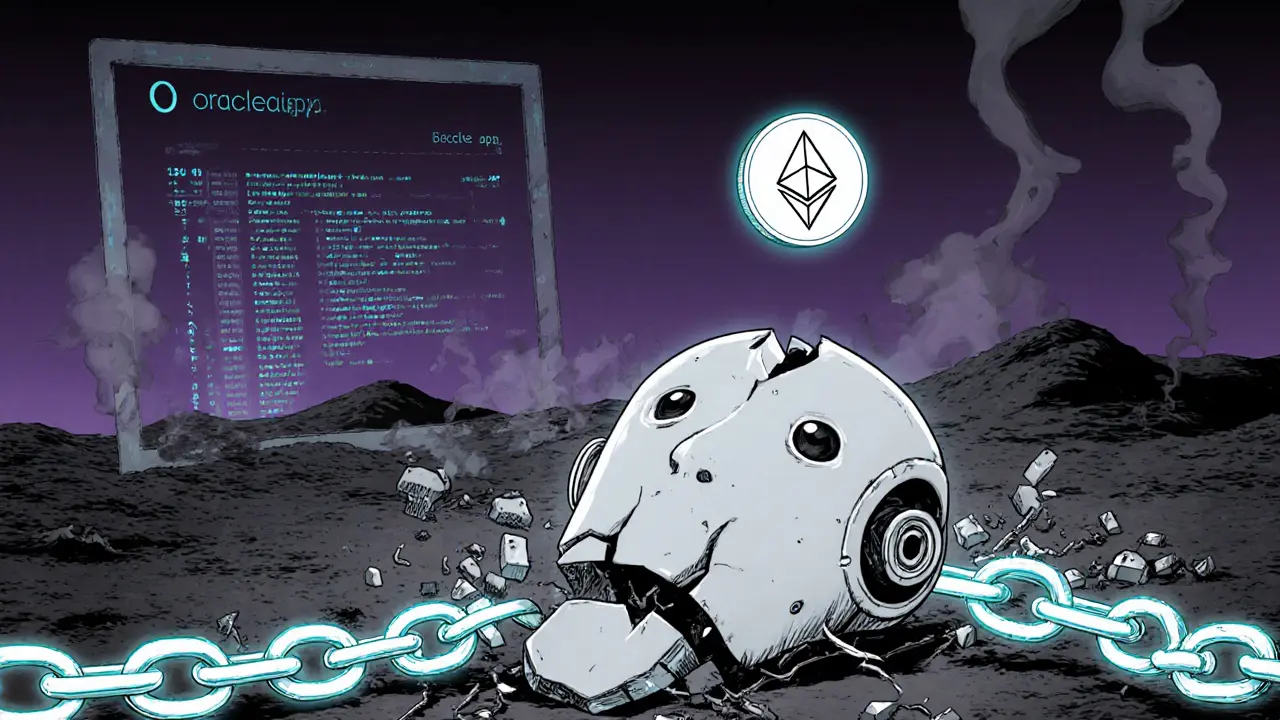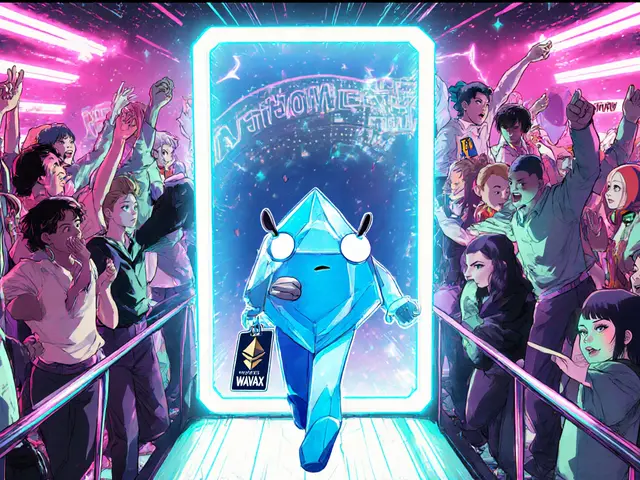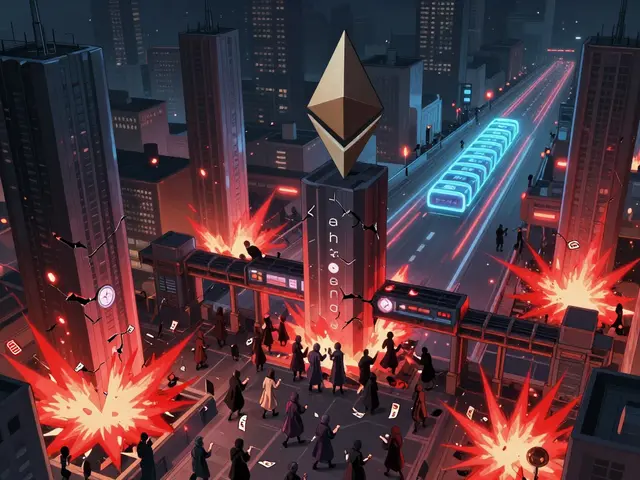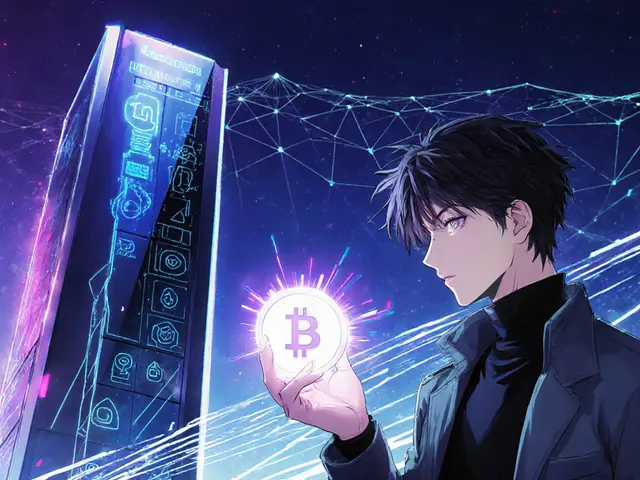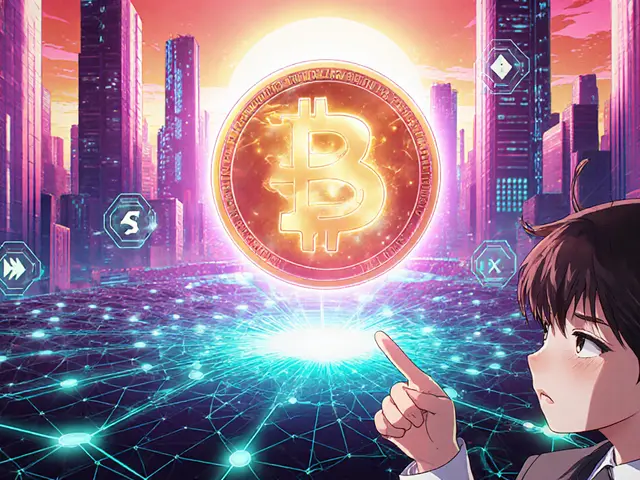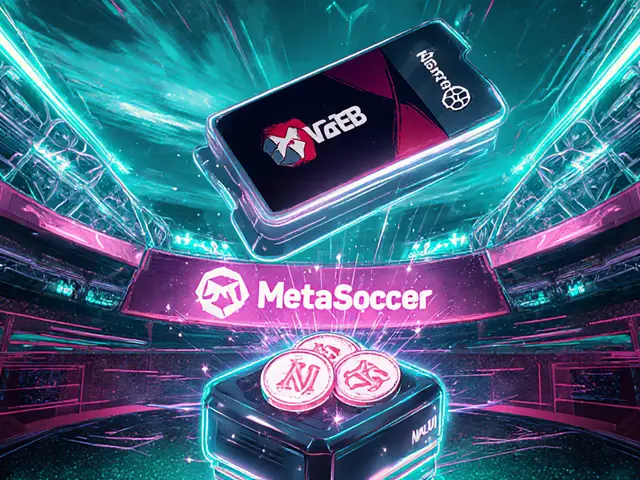Crypto Scam Risk Checker
Check your crypto project for scam risk
This tool uses key indicators from real cases like Oracle AI to assess if a crypto project might be a scam. Enter information about the project and we'll calculate the risk level.
Risk Assessment
Oracle AI (ORACLE) sounds like the next big thing in crypto: an AI-powered trading tool built on blockchain, promising to predict market moves, track influencers, and give you an edge. But here’s the reality - the project is dead. Its website has been offline since March 2025. No updates. No community. No working platform. What you’re seeing on exchange listings is a ghost - a token with no utility, no team, and no future.
What Oracle AI claimed to do
Oracle AI (ORACLE) was marketed as an Ethereum-based token designed to help crypto traders make smarter decisions. It promised to combine artificial intelligence with blockchain to analyze market trends, social media sentiment, and the performance of Key Opinion Leaders (KOLs) - influencers who sway crypto prices with their posts. The idea was simple: if you could track which influencers were right or wrong, you could copy their best moves and avoid their bad ones. The platform allegedly offered tools like:- A Telegram bot to send real-time trade signals
- Live charts with automated alerts for KOL activity
- Gasless swaps to reduce transaction fees
- Customizable data dashboards for sentiment tracking
The numbers don’t lie
Oracle AI had a total supply of 1 billion tokens. At its peak, it was valued at over $1.8 billion. That’s not a typo. Coinbase once listed an all-time high of $1,811.80 per token. That figure is impossible today. If the token was really worth that much, the entire market cap would be over $1.8 trillion - bigger than Bitcoin. This kind of wild discrepancy is a classic red flag. It suggests either a data glitch, a token rebase, or worse - a pump-and-dump scheme. Today, the price hovers around $0.00006 to $0.00015. The market cap? Between $60,000 and $130,000. That’s less than the cost of a decent used car. Trading volume? Often $0. On the days it trades, it’s under $1,600. That’s not liquidity. That’s a graveyard. CoinMarketCap shows only 2,790 holders. For a token with 1 billion supply, that means less than 0.0003% of tokens are actively held by real users. The rest? Likely stuck in wallets of early investors who dumped it long ago.How it compares to real AI crypto projects
Oracle AI isn’t just small - it’s irrelevant compared to actual AI blockchain projects.- Fetch.ai (FET) has a $1.5 billion market cap and real AI agents automating DeFi trades.
- Oraichain is a Layer-1 blockchain built specifically for AI oracles, with live smart contracts and developer tools.
- Ocean Protocol (OCEAN) lets users buy and sell real data sets on-chain - used by research labs and companies.
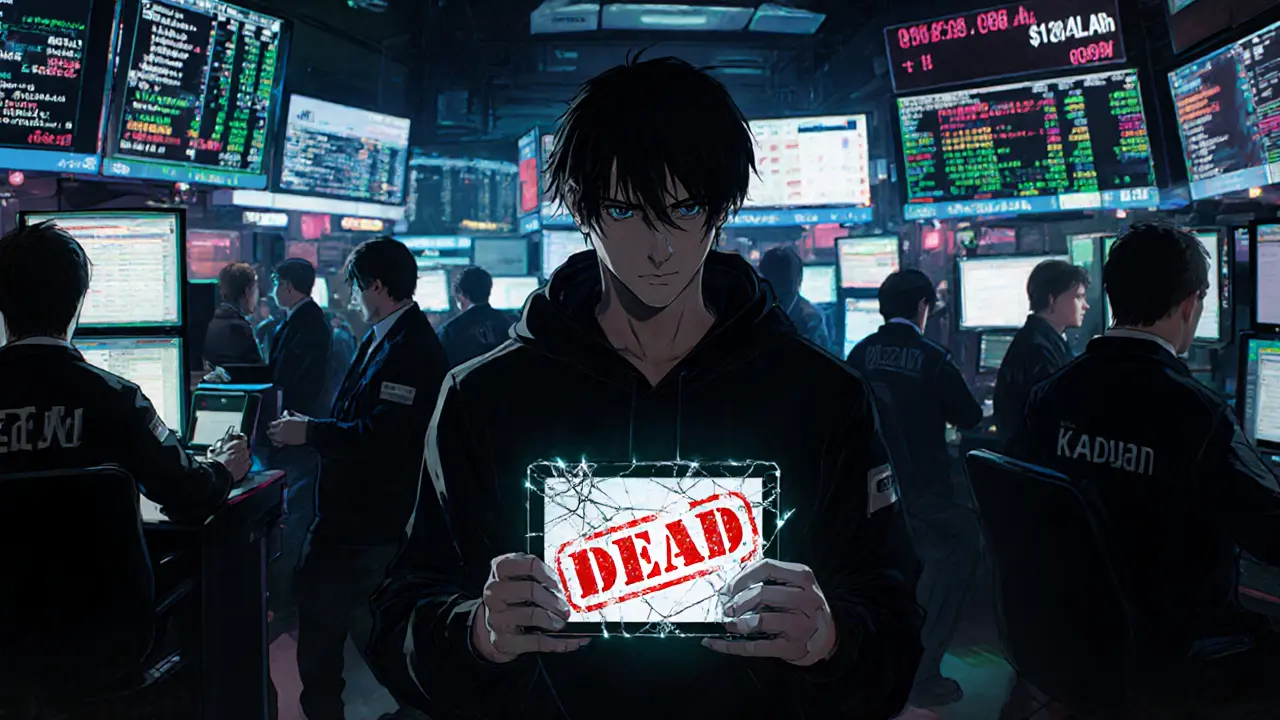
Why it’s a high-risk scam
This isn’t just a failed startup. This is a textbook example of a crypto scam.- Offline website - No legitimate project lets its site die for eight months. Real teams fix bugs. They update. They communicate.
- Extreme price swings - A token jumping from $0.00015 to $1,811 and back? That’s manipulation, not innovation.
- No team, no transparency - No names, no LinkedIn profiles, no interviews. Just a logo and a whitepaper that vanished with the site.
- Zero community - No Reddit threads. No Telegram groups. No active Twitter. Real crypto projects thrive on community. This one died alone.
What happened to the team?
Nobody knows. No one has spoken publicly since early 2025. No GitHub commits. No LinkedIn updates. No YouTube videos. No interviews. The team disappeared as soon as the token’s price started crashing. That’s not bad luck. That’s standard operating procedure for exit scams. Exit scams happen when creators hype a project, attract investors, pump the price, then vanish with the money. Oracle AI fits this pattern perfectly. The timeline is clear: launch → pump → website goes down → trading volume dies → price crashes → silence.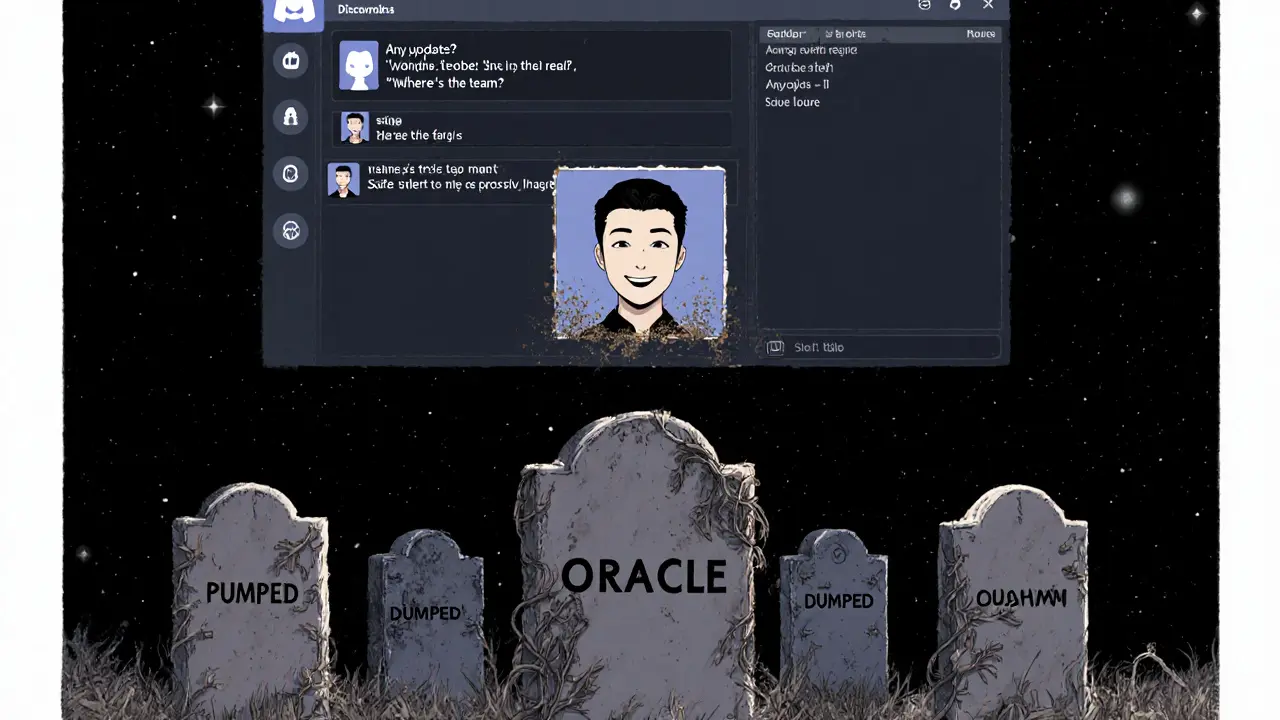
Should you buy ORACLE now?
No. There is no scenario where buying Oracle AI makes sense. Even if the website came back tomorrow - which it won’t - the project has lost all credibility. The token has no utility. No one is developing it. No one is using it. No one cares. The only reason someone might buy it now is hoping for a “pump” from a bot or a random trader. But with $0 trading volume for days on end, there’s no buyer liquidity. If you buy, you won’t be able to sell. You’ll be stuck with a token worth pennies - if anything at all.What to do if you own ORACLE
If you already hold Oracle AI tokens:- Don’t chase the price. It’s not coming back.
- Don’t stake it. There’s no platform to stake on.
- Don’t wait for a comeback. This project is dead.
- Consider writing it off. Treat it as a loss. Move on.
Final take: Don’t be fooled by names
Crypto is full of projects that sound smart - AI, blockchain, DeFi, Web3 - but deliver nothing. Oracle AI is one of them. It used buzzwords to lure in people who didn’t know better. It promised innovation. It delivered a website that vanished. If a crypto project’s biggest selling point is its name - not its tech, not its team, not its code - walk away. The market rewards substance. And Oracle AI had none.Is Oracle AI (ORACLE) a real cryptocurrency?
Technically, yes - it’s a token on the Ethereum blockchain. But it’s not a real project. It has no working platform, no active team, and no utility. It exists only as a ticker symbol on exchanges, with no actual function or development behind it.
Can I still trade ORACLE tokens?
You can technically trade it on a few exchanges like Coinbase and CoinGecko, but liquidity is nearly zero. Trading volume is often $0. If you buy, you may not be able to sell. The price is erratic and driven by bots, not real demand.
Why did the Oracle AI website go offline?
The website went offline in March 2025, and there’s been no explanation since. This is a major red flag. Legitimate projects maintain their sites even during setbacks. A dead website means the team has abandoned the project - likely after stealing investor funds in an exit scam.
Is Oracle AI the same as Oraichain?
No. Oraichain is a completely different project - a real Layer-1 blockchain for AI oracles, founded in 2020. It has active development, a public team, and a working platform. Oracle AI is a small, defunct token with no connection to Oraichain beyond the similar name - a common tactic used to confuse investors.
What should I look for in an AI crypto project instead?
Look for projects with: active GitHub repositories, public team members with LinkedIn profiles, real partnerships, documented use cases, and consistent community updates. Examples include Fetch.ai, Ocean Protocol, and Chainlink. Avoid anything that relies only on hype, vague promises, or offline websites.
Can Oracle AI ever come back?
It’s extremely unlikely. Eight months without updates, no team communication, zero community activity, and a dead website are signs of total abandonment. In crypto, projects that disappear this long rarely return - and when they do, it’s usually another scam.

